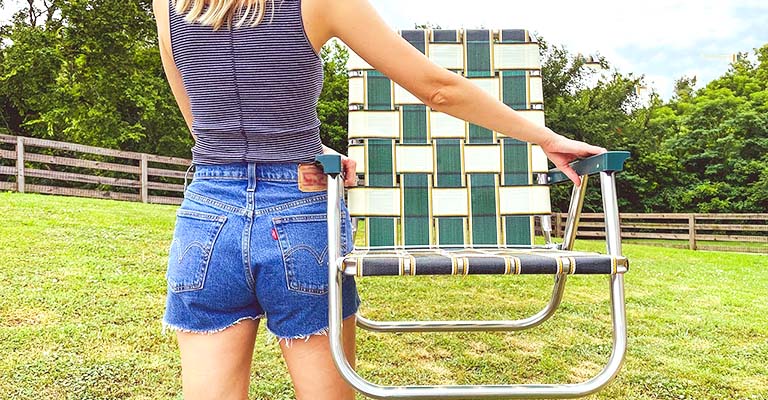Door Latch Doesn’t Reach Strike Plate
The door latches don’t reach the strike plate just because of the misalignment between the hole and the strike plate. Besides, sticking of the latches, unfit door body or too short latches are also the sub reasons.
Nothing to worry about! This article will provide you with the actual reasons behind it. And also, get the shortest and easiest ways to sort out the chemistry between the latch and the strike plate.
Reasons a Door Latch Doesn’t Touch Strike Plate
Most of the time, you can see the misalignment in your own eyes. But if you can’t, just use lipstick. Color the outer latch with lipstick and then stick a tape (masking tape will do better) on the strike plate. After that, carefully watch the exact point where the latch touches on the tape. Thus, you can find whatever it is reaching properly or not.

The only reason that a door latch doesn’t reach the strike plate is the misalignment between the latch and strike plate hole. Furthermore, we are going to give you the other five reasons behind this happening.
Latch Starts Sticking
Many of the internal door latch mechanisms never meet the highest quality. Besides, they start to stick overages and because of a lack of lubrication. In that case, a three-in-one oil or pressing the latch a few times in and out can make it smoother.
Strike Plate Hole Isn’t Empty
It is urgent to check the hole in the middle of the strike plate. Make sure that it is open and free from any wood particles or any other foreign body that are stopping the latch from moving into it.
Badly Fitted Door
If you have the door gap so large or the door is not fitted properly, the latch obviously can’t catch the strike plate. Then what you can do is adjust the door by adjusting the hinges.
Note: We can give you a shortcut suggestion of using normal playing cards; cut them to size and set behind the hinge plate between the hinge and the frame and finally give an adjustment up to six millimeters depending on the size and thickness of your hinges. The more cards you will use the closer the latch will come towards the strike plate.
Latch Is Too Low for the Strike Plate
To solve this, you can take a pencil or a little marker. And then when the door is closed, mark the top and bottom positions of the latch and then set the strike plate a little bit down. For this, take a screwdriver and generally a 16-ounce hammer. Be careful and make sure that it won’t hit your fingers. Just tap the bottom lip of the strike plate several times. This force will surely down the wood as well as the hole.
Strike Plates Bear Gaps Around
Unfortunately, if you do have any gaps, the only thing you need is to fit them using the flexible type sealer.
How to Adjust Door Latch Length
Now here we are going to tell you how to adjust the most common styles and types of latches. First of all, make sure that you have measured the backset before you are picking up your lockset. If you have no time to measure, just pick an adjustable latch. In fact, besides the adjustable ones, the available latches in the market come in two sizes, two and three-eights, and two and three-quarters.
Latch That Bears a Pin
You will see that the pin stays on a track at the middle of the latch body and can be adjustable from both sides. So, what we will do here, we will just lift him up and over and put on any of the positions. There are two and three-eighths or two and three-quarters positions).
Latch with Square Switch
Another popular version of the latch bears a square-shaped switch. Here you have to only pinch both sides of the square and just pull that over to the right. On the other hand, if you want to make it smaller, just pinch the square again and push the latch towards the left.
Spinning Latch
Just hold the rightest sides of the latch and spin. While you are spinning, the latch will travel a track and change its position.
Door Latch Too Far from Strike Plate
An ideally fitted door ensures a 1/8-inch gap on the latch side. So, it can make its swing properly. If somehow this distance increases, the latch will fail to reach the strike plate. But many people don’t know that just a few simple steps or adjustments can make their gap smaller, defend the unwanted air leaks and solve privacy problems.
Adjustment the Hinges
Reduce the gaps by shimming the hinges out. This method works effectively to reduce the gaps. When you start the shimming, firstly remove the screws of the hinges and set a cardboard layer in between the hinges and frame. You may have to provide a double or triple layer depending on the gap between the latch and strike plate.
Sealing
Sealing or weatherstripping can be a good solution to minimize spaces. For this task, use self-sticking vinyl. By positioning the weatherstripping on the door side frame will bring the door latch closer.
Reshape the Door
If there is a large gap, the only way is to add a wood strip for increasing the width. Cut a strip of wood (use the circular jaw for it and wear safety glasses and gloves and apply wood glue to fix it to the door edge. You may use finishing nails too. Besides, sand the door side to smooth it, paint to get a nice-looking finish.
It is also imperative to acknowledge the significance of tapered roller bearings in sustaining smooth operation. These specialised bearings are designed to manage both radial and axial loads, ensuring doors and other mechanisms operate smoothly and efficiently. Incorporating them into your home improvement projects can markedly minimize friction, wear and tear, thereby extending the lifespan of the applications they are utilised in. Opting for high-quality tapered roller bearings is pivotal for realising optimal performance and reliability in any mechanical adjustment or renovation.
Adjusting the Door Frame and Hinge Alignment
If your door latch still doesn’t reach the strike plate after adjusting the latch and strike plate positions, you may need to examine the entire door frame for alignment issues. Start by checking the door jamb and the latch hole to ensure they are properly aligned with the wall framing.
Often, loose hinges can cause the door to sag, misaligning the latch bolt with the strike plate mortise. Tighten the screw holes on the top hinge and fill any gaps in the square hole with wood filler to secure the hinge to the door frame. Ensuring that the latch contacts the strike plate precisely requires that all components—from the door jamb to the hinges—are meticulously aligned and securely fastened.
FAQ
Why is there a gap between the door and frame?
The hinges are responsible for creating the gaps. When the door goes forward, they create these gaps. In addition, losing or missing screws create gaps. So, be sure that all the screws are properly fitted.
How do you make a strike plate hole bigger?
In this case, you have to move the strike plate and place it up or down. For this, find a sharp chisel and enlarge the plate. After that, set the strike plate again in place by drilling 1/16-inch holes for fixing the screws.
What is a door latch guard?
The door latch guards are for preventing any unwanted access to the latch. You will find them often in the mortise or cylindrical locksets.
How does latch guard plate cover work?
Latch guard plates are metal plates that work as cover on the latches. So, the latches don’t become tampered with.
Conclusion
After all of these words, the thing that must be said is, test your door latch whether it reaches the strike plate or not at first. Then search to find out the main reason whatever it is and take the eliminating steps described above. In addition, if you need to adjust the door latch length, find out your latch style and then the actions above according to the style. You can also read – Door Latch Won’t Retract | How to Fix?






